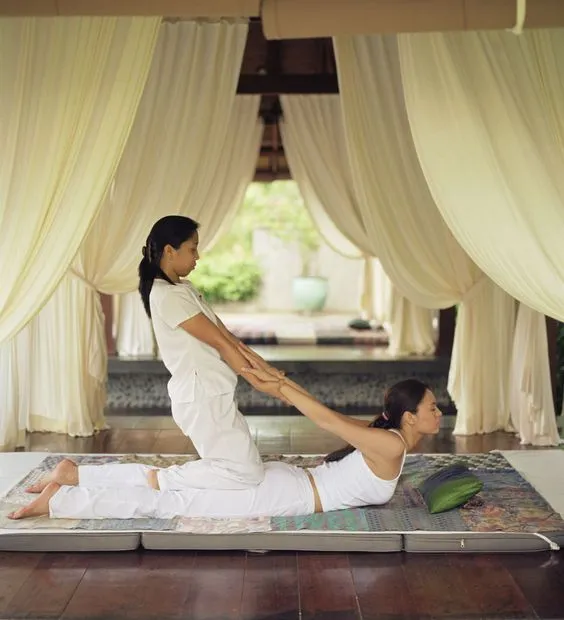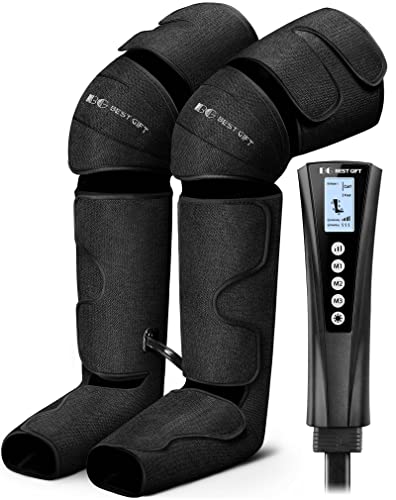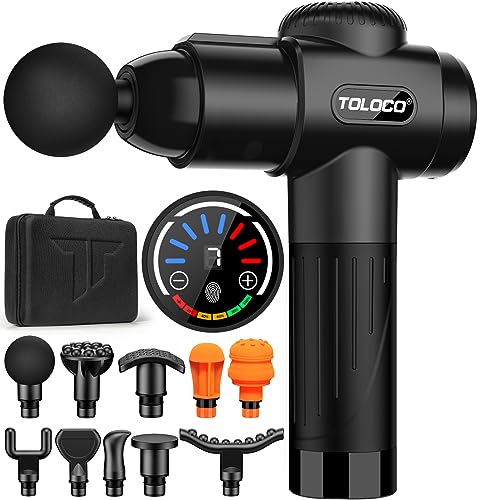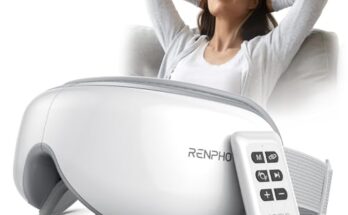A proper Thai massage is a traditional healing system involving deep pressure and stretching techniques. It aims to improve flexibility, alleviate muscle tension, and promote overall well-being.
Thai massage, a traditional healing system, uses deep pressure and stretching techniques. This ancient practice has been popular for centuries and is known for its ability to improve flexibility, relieve muscle tension, and enhance overall mental and physical wellness. The massage involves the application of rhythmic pressure along the body’s energy lines, combined with yoga-like stretching to promote relaxation and reduce stress.
Through its holistic approach, Thai massage aims to balance the body’s energy flow and improve the overall circulation of vital energy within the body. As a result, it is not only a therapeutic treatment but also a rejuvenating experience for those seeking relief from physical discomforts and mental strains.

Credit: athleteschoicemassage.ca
History Of Thai Massage
Thai massage, also known as Nuad Boran or Thai yoga massage, has a rich history deeply intertwined with the cultural and spiritual heritage of Thailand. The origins of Thai massage date back thousands of years and are rooted in ancient healing practices, traditional techniques, and the influence of Buddhism. Let’s delve into the fascinating history of Thai massage, exploring its origins, traditional techniques, influence of Buddhism, and early practitioners.
Origins Of Thai Massage
Thai massage traces its origins to the Indian healing tradition of Ayurveda and the ancient Thai medical system. It is believed to have been developed by Jivaka Kumar Bhaccha, a physician to the Buddha, over 2,500 years ago. The techniques were passed down through generations, evolving to incorporate elements of Chinese medicine and indigenous Thai healing practices.
Traditional Techniques
The practice of Thai massage encompasses a combination of acupressure, yoga-like stretching, and energy work. Long, rhythmic strokes are applied to the body to stimulate energy lines, known as “sen,” and release tension. Practitioners use their hands, feet, elbows, and knees to apply pressure and facilitate stretching movements, promoting overall well-being and relaxation.
Influence Of Buddhism
Buddhism has played a significant role in shaping the philosophy and approach of Thai massage. The practice is deeply rooted in the Buddhist principles of loving-kindness, compassion, and mindful awareness. Metta, or loving-kindness, is embodied in the therapist’s intention to offer healing and relief to the recipient, fostering a sense of connection and harmony. Mindfulness and presence are central to the practice, creating a meditative experience for both the giver and receiver.
Early Practitioners
Throughout history, Thai massage has been preserved and enriched by dedicated practitioners who passed down their knowledge through oral tradition and hands-on training. The monks in Thai temples were among the early practitioners, using massage as a tool for physical healing and spiritual growth. Their expertise and insights contributed to the refinement and preservation of traditional Thai massage techniques.

Credit: m.facebook.com
Benefits Of Thai Massage
Thai massage is a traditional healing art that combines acupressure, Indian Ayurvedic principles, and assisted yoga postures. This therapeutic practice offers a wide range of benefits that contribute to the overall well-being of the body, mind, and spirit.
Enhances Physical Flexibility
Thai massage involves a series of passive stretching and gentle pressure on the muscles, which helps to improve flexibility and range of motion. These movements target various muscle groups, promoting increased flexibility and mobility.
Promotes Relaxation And Stress Relief
The rhythmic movements and gentle pressure applied during Thai massage promote relaxation and alleviate stress. This technique helps to release tension in muscles and joints, allowing for a deep sense of relaxation and mental clarity.
Improves Circulation
Through the combination of rhythmic motions and targeted pressure, Thai massage stimulates blood flow, enhancing circulation throughout the body. Improved circulation facilitates the delivery of nutrients and oxygen to the cells, promoting overall health and vitality.
Boosts Energy Levels
Thai massage stimulates the body’s energy pathways, known as Sen lines, to restore balance and promote energy flow. This helps to reduce fatigue and invigorate the body, leaving you feeling revitalized and rejuvenated.
Alleviates Joint And Muscle Pain
The unique combination of stretching and deep tissue massage techniques in Thai massage can alleviate joint and muscle pain. By targeting specific areas of tension and discomfort, this practice helps to relieve pain and improve overall body alignment.
Unique Features Of Thai Massage
Thai massage is a traditional healing practice that provides a range of unique features. Its distinctive characteristics make it different from other forms of massage therapies. Let’s explore some of the key elements that set Thai massage apart.
Combination Of Stretching And Massage
In Thai massage, you will experience a combination of gentle stretching movements and therapeutic massage techniques. The therapist use their hands, feet, knees, and elbows to apply pressure to specific points on your body while also guiding you through various stretching positions. This dynamic blend of stretching and massage helps to release tension, improve flexibility, and promote overall relaxation.
Focus On Energy Lines
Thai massage is based on the belief that there are energy lines, or “sen,” running through the body. These energy lines are similar to the meridians in Chinese medicine. During a Thai massage, the therapist applies pressure along these energy lines to stimulate the flow of energy and restore balance within the body. By targeting these energy lines, Thai massage not only addresses physical discomfort but also works on an energetic level to promote overall well-being.
Use Of Bodyweight And Direct Pressure
Unlike many other massage techniques that primarily rely on using hands and fingers, Thai massage therapists employ their body weight to apply direct pressure during the treatment. This allows for a deeper and more focused pressure on specific areas, helping to release tension and alleviate muscle pain. The combination of bodyweight and direct pressure creates an intensely therapeutic experience that can effectively address areas of chronic pain or stiffness.
Clothes On, No Oils Or Lotions
One of the unique aspects of Thai massage is that the treatment is typically done fully clothed. This makes it more accessible and convenient for individuals who prefer to remain dressed during a massage session. Additionally, Thai massage does not involve the use of oils or lotions. The therapist uses their hands and body to manipulate your muscles and facilitate stretching without any additional substances. This makes Thai massage a clean and oil-free therapeutic experience.
Holistic Approach
Thai massage takes a holistic approach to healing, addressing both the physical and energetic aspects of the body. It aims to create a balance between the mind, body, and spirit, promoting overall wellness. In addition to the physical benefits, Thai massage also focuses on deep relaxation, stress reduction, and the restoration of inner harmony. This comprehensive approach sets Thai massage apart as a therapeutic practice that encompasses the whole person.
Professional Training And Certification
Professional Thai massage therapists undergo rigorous certified training programs.
Certified Training Programs
The training programs ensure competency in traditional techniques and anatomy.
Duration And Curriculum
Training typically lasts 300-800 hours, covering anatomy, physiology, and hands-on practice.
Importance Of Accreditation
Accreditation ensures high standards and ethical practices in the profession.
Continuing Education And Specializations
Therapists pursue ongoing education to refine skills and offer specialized services.
Finding A Reputable Thai Massage Practitioner
Researching Credentials And Experience
Check for valid certifications and years of practice.
Verify the expertise in Thai massage techniques.
Confirm the practitioner’s background in Thai healing traditions.
Reading Reviews And Testimonials
Look for positive feedback from previous clients.
Ensure testimonials mention the quality of service.
Asking For Recommendations
Seek advice from friends or family who had a positive experience.
Ask for referrals from other wellness professionals.
Visiting The Massage Facility
Inspect the cleanliness and ambiance of the establishment.
Observe the professionalism of staff and overall atmosphere.

Credit: m.facebook.com
Frequently Asked Questions On What Is A Proper Thai Massage
What Does Thai Massage Include?
Thai massage is a traditional healing technique from Thailand that combines acupressure, stretching, and deep tissue massage. It focuses on improving flexibility, relieving muscle tension, and promoting relaxation and well-being.
What To Expect From A Thai Full Body Massage?
A Thai full body massage is a traditional technique that uses stretching, acupressure, and rhythmic movements to promote relaxation and alleviate muscle tension. You can expect improved flexibility, reduced stress, and an overall sense of well-being after the session.
Do I Take My Clothes Off For Thai Massage?
Yes, for a traditional Thai massage, clients usually keep their clothes on.
Do You Take Off Bra For Thai Massage?
During a Thai massage, it is generally not necessary to take off your bra. However, you can discuss your comfort level with the therapist beforehand.
Conclusion
Thai massage is a traditional healing art that offers numerous benefits for both the body and the mind. It is a holistic approach to wellness, promoting relaxation, improved flexibility, and increased energy flow. With its unique combination of stretching, acupressure, and rhythmic movements, Thai massage is an effective way to alleviate stress, reduce muscle tension, and enhance overall well-being.
Experience the rejuvenating effects of this ancient practice and discover the true essence of a proper Thai massage. Let the therapist’s skilled hands guide you on a journey of healing and restoration. Discover the wonders of Thai massage and unlock the potential for a healthier, more balanced life.



